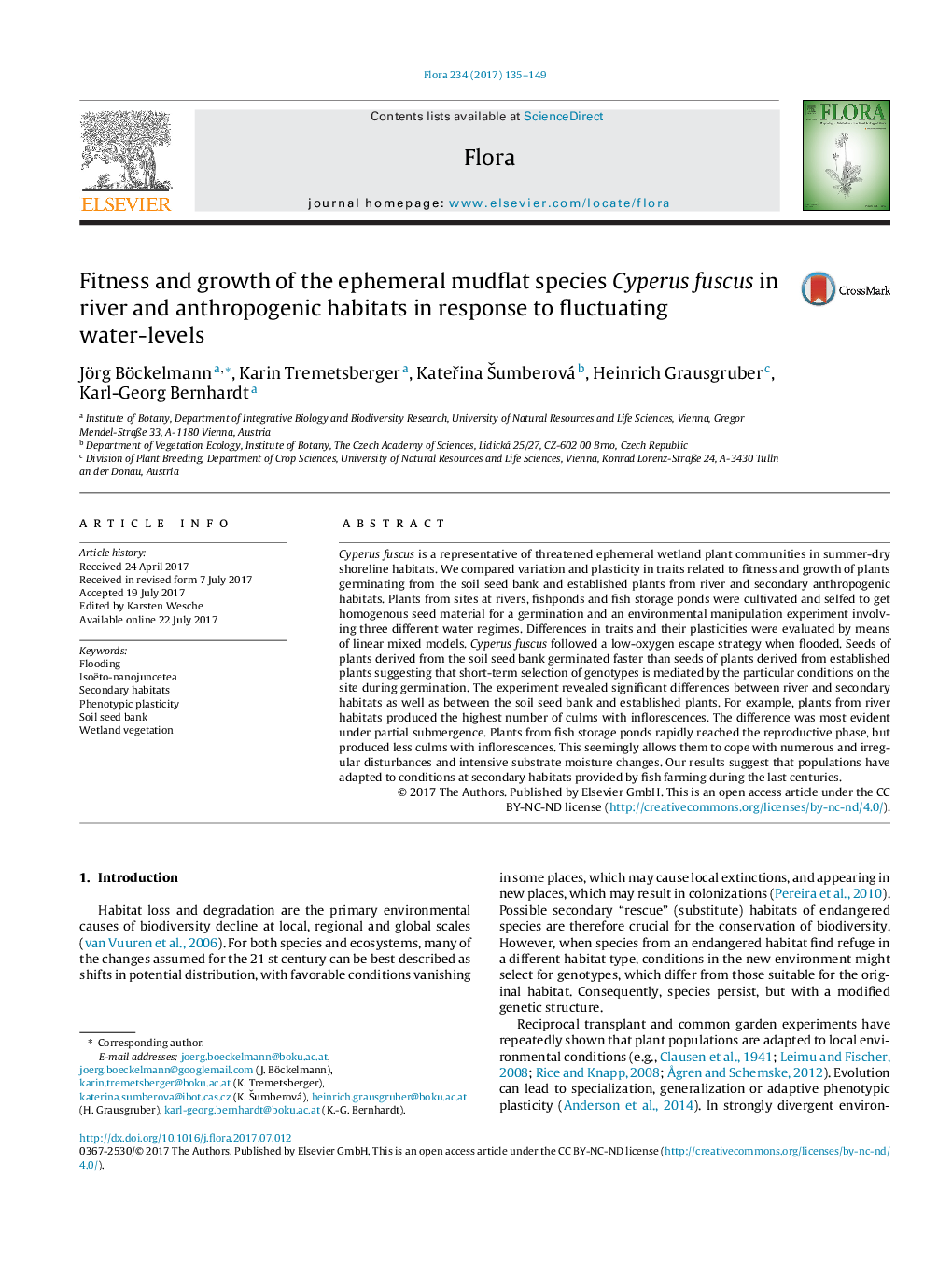| کد مقاله | کد نشریه | سال انتشار | مقاله انگلیسی | نسخه تمام متن |
|---|---|---|---|---|
| 5532322 | 1549925 | 2017 | 15 صفحه PDF | دانلود رایگان |

- Cyperus fuscus follows a low-oxygen escape strategy when flooded.
- The soil seed bank enables fast germination under various environmental conditions.
- Plants from river habitats are best adapted to repeated and severe flooding.
- Plants from secondary habitats are less adapted to flooding but still cope with it.
Cyperus fuscus is a representative of threatened ephemeral wetland plant communities in summer-dry shoreline habitats. We compared variation and plasticity in traits related to fitness and growth of plants germinating from the soil seed bank and established plants from river and secondary anthropogenic habitats. Plants from sites at rivers, fishponds and fish storage ponds were cultivated and selfed to get homogenous seed material for a germination and an environmental manipulation experiment involving three different water regimes. Differences in traits and their plasticities were evaluated by means of linear mixed models. Cyperus fuscus followed a low-oxygen escape strategy when flooded. Seeds of plants derived from the soil seed bank germinated faster than seeds of plants derived from established plants suggesting that short-term selection of genotypes is mediated by the particular conditions on the site during germination. The experiment revealed significant differences between river and secondary habitats as well as between the soil seed bank and established plants. For example, plants from river habitats produced the highest number of culms with inflorescences. The difference was most evident under partial submergence. Plants from fish storage ponds rapidly reached the reproductive phase, but produced less culms with inflorescences. This seemingly allows them to cope with numerous and irregular disturbances and intensive substrate moisture changes. Our results suggest that populations have adapted to conditions at secondary habitats provided by fish farming during the last centuries.
Journal: Flora - Volume 234, September 2017, Pages 135-149